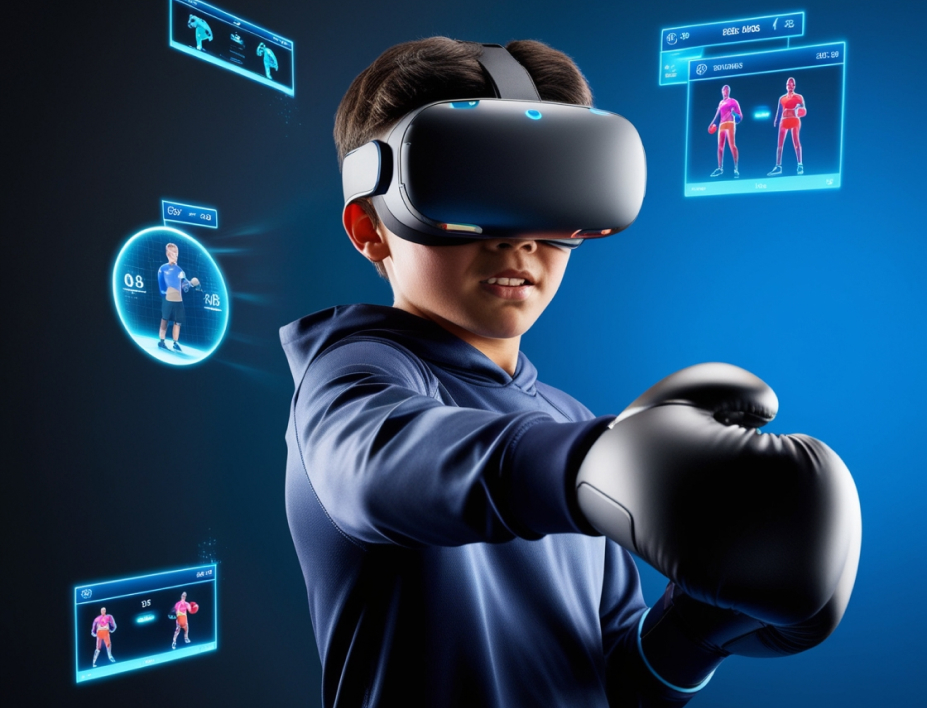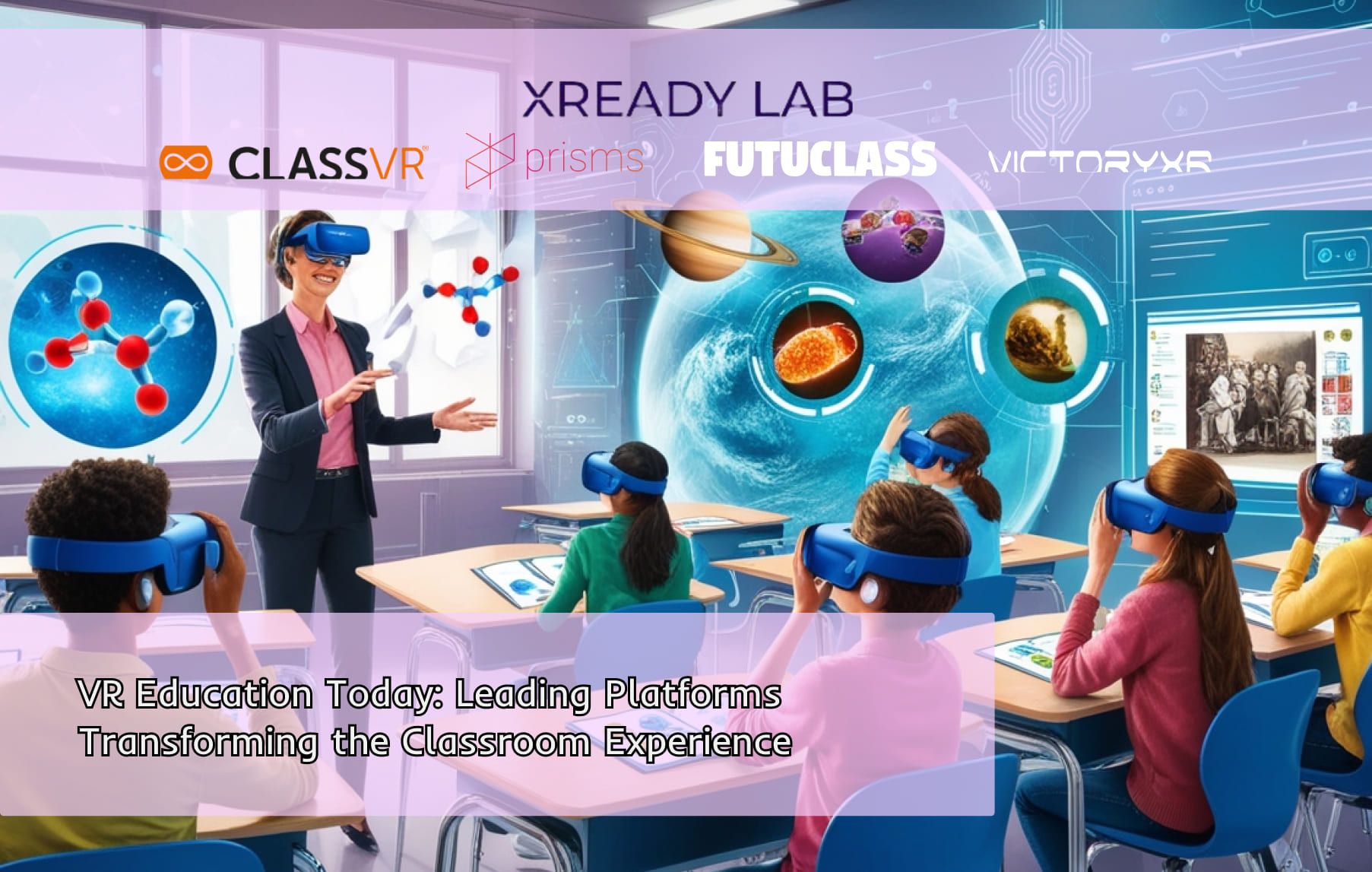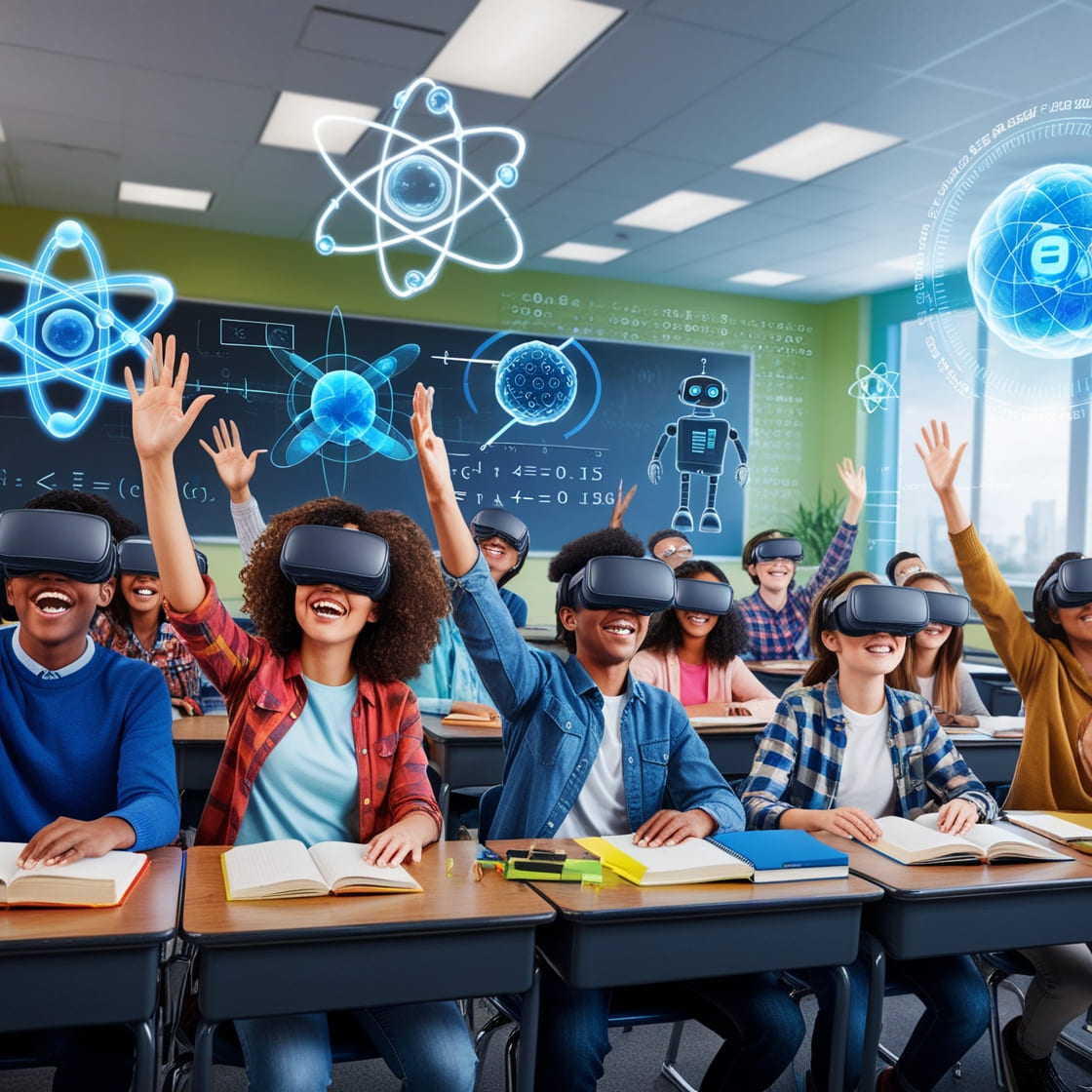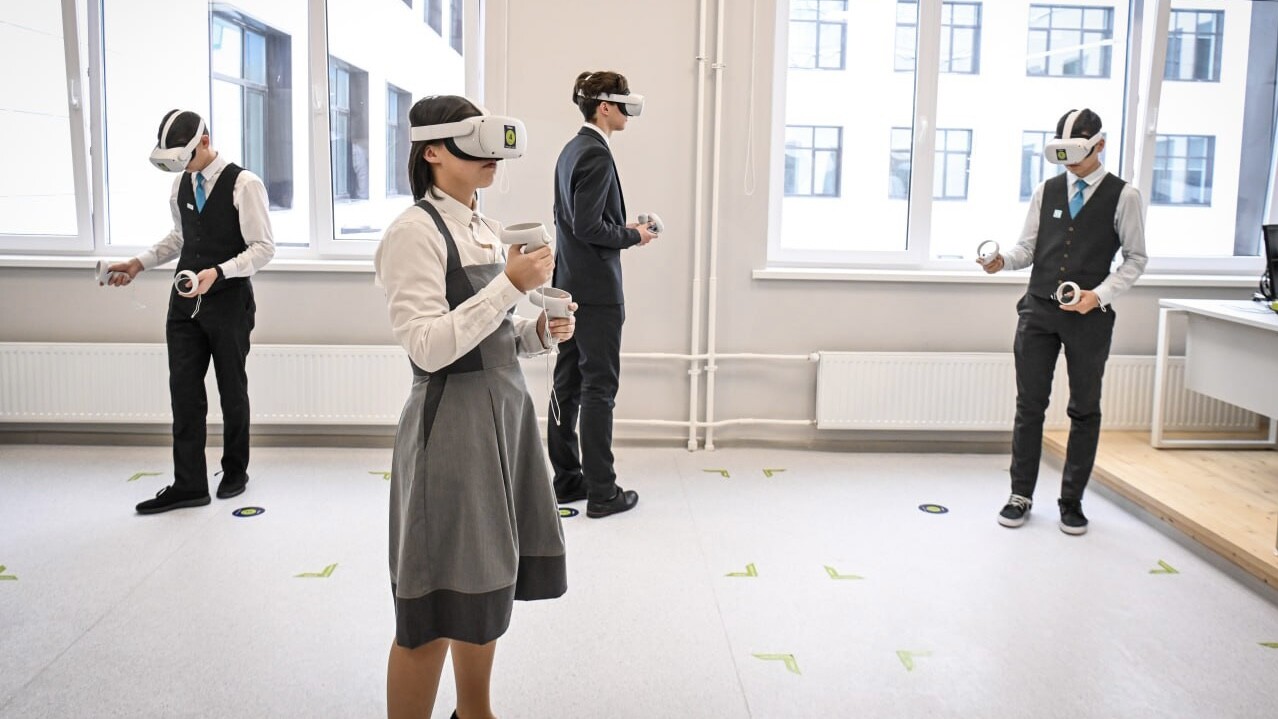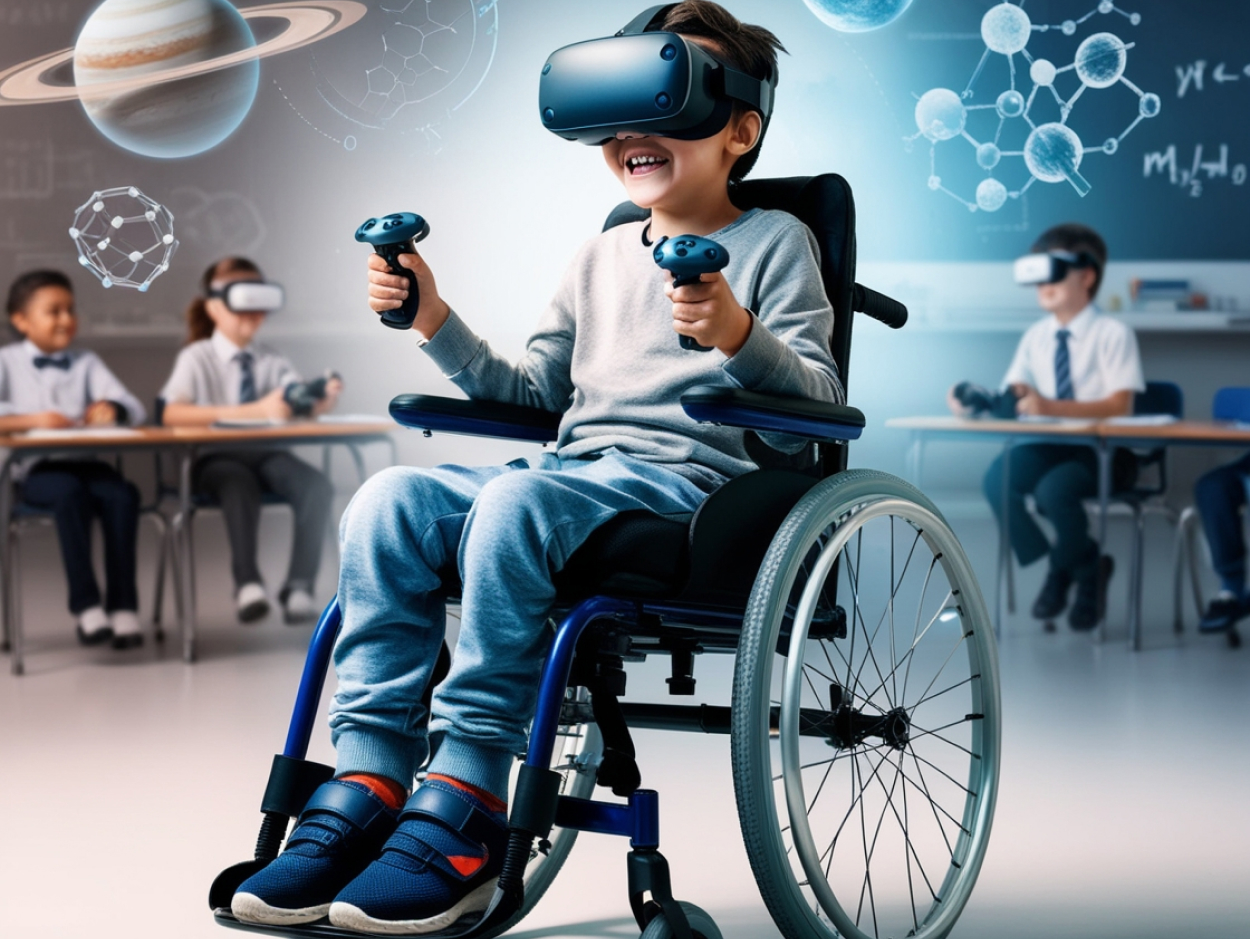
Education is a fundamental right, yet many students with disabilities face significant challenges in accessing quality learning experiences. Traditional classrooms may not always accommodate the diverse needs of all learners. Virtual reality (VR) is emerging as a powerful tool to transform education by making it more inclusive and accessible for everyone.
How VR Enhances Inclusive Education
Virtual reality (VR) is revolutionizing education by making it more accessible and inclusive for students with diverse needs. By creating immersive and adaptable learning environments, VR breaks down barriers that have traditionally hindered equal participation in education.
Overcoming Physical Barriers
[caption id="attachment_980" align="alignnone" width="645"] XReady Lab VR education: VR Mitosis laboratory[/caption]
For students with physical disabilities, participating in traditional classroom activities—especially in subjects like science that require hands-on experimentation—can be challenging. VR technology enables these students to engage fully in interactive lessons without physical limitations.
Imagine a student who uses a wheelchair being able to conduct virtual chemistry experiments, manipulate equipment in a physics lab, or explore biological processes up close. With VR, the need for physical mobility is minimized; students can interact with virtual objects using handheld controllers while remaining seated. This not only provides equal access to learning opportunities but also fosters a sense of inclusion as they participate alongside their peers.
A study published in the Journal of Special Education Technology highlighted how VR can enhance science education for students with mobility impairments, allowing them to perform virtual dissections and laboratory experiments that would otherwise be inaccessible.
Supporting Cognitive and Social Development
VR's immersive environments offer unique opportunities for students with cognitive disorders or learning disabilities. For example, children on the autism spectrum often face challenges with social interactions and sensory processing. VR can provide controlled, customizable settings where these students can practice social skills without the unpredictability of real-world interactions.
Research conducted by the Autism Research Institute has shown that VR can help individuals with autism develop social communication skills by simulating real-life scenarios, such as ordering food in a restaurant or navigating a public space. The ability to repeat scenarios and adjust sensory inputs makes VR an effective tool for gradual exposure and learning.
Moreover, VR can aid students with attention-deficit/hyperactivity disorder (ADHD) by creating engaging, interactive lessons that capture their attention and reduce distractions. The immersive nature of VR can help maintain focus, potentially improving learning outcomes.
Assisting in Psychological Rehabilitation
For students dealing with psychological trauma or anxiety, VR can serve as a therapeutic medium. Exposure therapy, a common technique used to treat phobias and anxiety disorders, can be conducted safely within a virtual environment. Students can confront their fears in a controlled setting, gradually building resilience and coping strategies.
[caption id="" align="alignnone" width="772"] Virtual Speech game[/caption]
In educational settings, VR can help alleviate anxiety associated with certain tasks, such as public speaking. By practicing speeches in front of a virtual audience, students can build confidence and reduce performance-related stress.
Customizable Learning Experiences
One of the strengths of VR is its ability to tailor experiences to individual needs. Educators can adjust the complexity, pacing, and sensory stimuli of virtual lessons to accommodate various learning styles and abilities. For students who require a quieter environment or need more time to process information, VR can provide personalized settings that enhance comprehension.
Enhancing Engagement and Motivation
Maintaining engagement can be a challenge, especially for students with learning difficulties. VR's interactive and visually stimulating environments increase motivation and interest in learning. By transforming abstract concepts into tangible experiences, VR helps students grasp difficult subjects, promoting better retention and understanding.
The Role of XReady Lab
At XReady Lab, we are passionate about making education accessible and engaging. While we are not specialists in the education of children with disabilities, we believe that our VR learning solutions can support inclusive education.
Our simulations are designed to be used while seated, requiring minimal physical movement. Students navigate and interact using handheld controllers, making our programs accessible to those with physical disabilities. We offer a wide range of modules in physics, chemistry, and biology, aligned with educational standards, ensuring that all students can participate in core learning activities alongside their peers.
By providing immersive and interactive experiences, our virtual reality classrooms promote engagement and understanding, helping to bridge gaps and create a more inclusive learning environment.
Experience the possibilities with XReady Lab.
👉 Request your free demo today!
Looking Ahead: The Future of Inclusive Education
The potential of virtual reality technology in education extends far beyond novelty. It's a powerful tool that can help bridge gaps in inclusive learning, offering adaptable, immersive, and engaging experiences for all students.
By leveraging VR, educators can create interactive classrooms where every student has the opportunity to succeed, regardless of physical or cognitive challenges. As technology continues to advance, the integration of VR in schools will play an increasingly vital role in shaping an education system that is truly inclusive.
At XReady Lab, we are committed to exploring how our VR educational solutions can support this mission. We invite educators, specialists, and schools to collaborate with us in making education accessible to all.
Join us in shaping the future of inclusive education.
👉 Request your free demo now!
